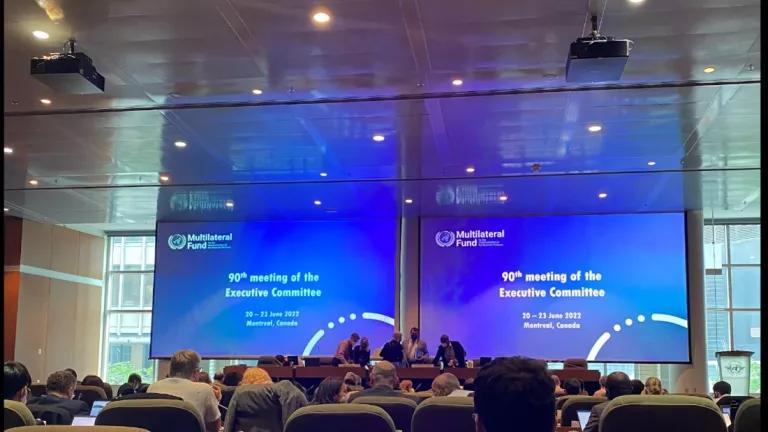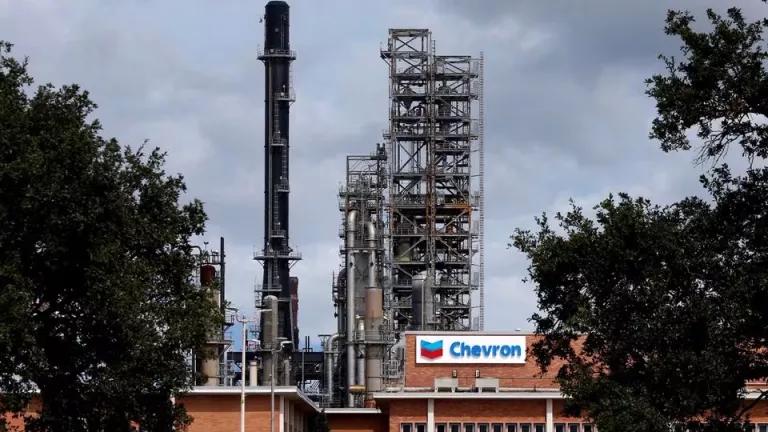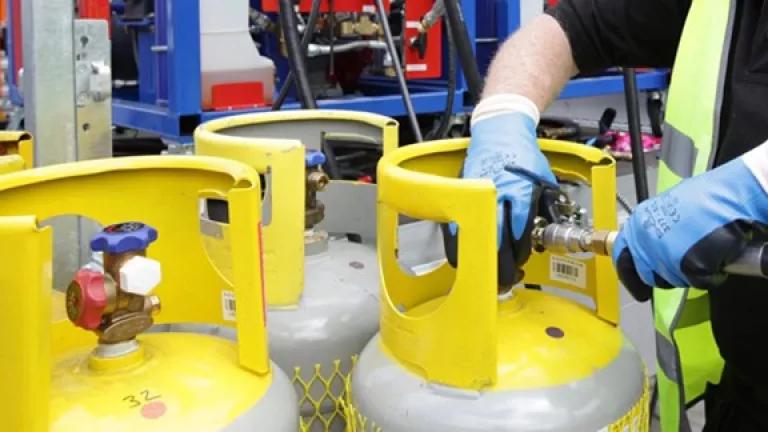
Photo: Parties at the 90th Meeting of the Executive Committee of the MLF in Montreal- June 2022
The Montreal Protocol returns to the world stage next week for its first in-person meeting of the COVID-19 era. After spending the last 31 months physically apart, country officials will again shake hands and take up the task of protecting the atmosphere from harmful fluorocarbons and maximizing the environmental co-benefits of doing so.
Delegations from well over a hundred countries will gather in Bangkok for the 44th Open-Ended Working Group (OEWG), a week-long meeting that hopes to tackle a significant backlog of treaty business and more. The meeting comes as significant global effort has gotten underway to phase down hydrofluorocarbons (HFCs), the super-potent greenhouse gases used in cooling appliances, insulating foams, and other applications. An impressive 136 countries have now ratified the Kigali Amendment, a 2016 global pact under the Protocol to reduce HFC production and use by more than 80 percent over the coming two decades. If implemented successfully, the Kigali Amendment will avoid the use of HFCs equivalent of more than 70 billion tons of CO2 over the next 35 years and limit remaining climate warming from HFCs to less than 0.06°C.
The packed agenda for next week’s meeting includes the important agenda item of agreeing a 2-year-delayed funding “replenishment” package for the Montreal Protocol’s Multilateral Fund (MLF), which implements the treaty in developing countries, covering the years 2021-2023. A successful replenishment of the MLF is critical to keeping up the momentum of projects in the developing world to fulfill treaty goals. In 2020, negotiators agreed on an interim operating budget for the MLF, assembling a $268 million holdover funding package for a three-year period. These funds aimed to sustain the MLF during the COVID-19 pandemic until countries could get together in person to agree a proper three-year replenishment, as it usually does. It will do that now, and better late than never!
Another top agenda item is a discussion of gaps in the science community’s global atmospheric monitoring network and how it can be augmented. Today, large swaths of the globe are invisible to atmospheric scientists’ networks of air monitors that can detect emissions of HFCs, CFCs, and other halocarbons. Enhancing both global and regional atmospheric monitoring of substances controlled by the Montreal Protocol will become increasingly important as countries implement their HFC phasedown plans. Already there is a major mismatch between our bottom-up understanding of emissions sources of HFC-23 – the most potent HFC of all, which is usually emitted as a by-product of other fluorine chemistry production facilities – and fast-rising global HFC-23 concentrations in the atmosphere. HFC-23 by-product emissions are largely banned for countries that have ratified the Kigali Amendment.
The meeting will also discuss strengthening the treaty’s institutions and enforcement mechanisms, plans for improving the energy efficiency of HFC alternatives (more on that in a moment), the terms of reference for the analysis that will be done next year by the treaty’s expert Technology and Economic Assessment Panel (TEAP) to underpin the next MLF replenishment for 2024-2026, and more.
After the week of OEWG meetings, which are technically informal, there will be a one-day Extraordinary Meeting of Parties (ExMOP), a gathering with the power to take official treaty decisions and whose job it will be to formally agree some of what’s discussed during the week. We and others primarily expect the ExMOP to agree to a final sum for the replenishment of the MLF for 2021-2023.
Energy Efficiency
We’re closely watching for more progress on plans for the Protocol to improve the energy efficiency of refrigerant-based appliances during the HFC phasedown. Way back in 2016 countries expressed interest in maintaining and/or enhancing energy efficiency while they phase down HFCs and asked the MLF for its guidance on the costs of doing so. NRDC and partners have worked for several years to identify how this could come together.
In June, the Executive Committee of the MLF met and discussed the matter. Specifically at issue was whether to attempt to fund energy efficiency measures with its own funds or whether to seek external funding sources. MLF member countries – a much smaller subset than those present at next week’s meeting – asked the MLF Secretariat to take the next step of look into operational issues associated with each option, as well as to develop criteria for a first-ever set of pilot energy efficiency projects. It’s the biggest advance we’ve yet seen on energy efficiency, and we’re hoping to see countries build on this progress with more next week.
Action in the United States
Next week’s meeting comes on the heels of major action on HFCs in the United States. As of January 1st of this year, the U.S. is in compliance with its HFC production and consumption limits under the allocation program prescribed by the American Innovation and Manufacturing (AIM) Act and the Kigali Amendment. The Environmental Protection Agency has also granted 10 petitions under the AIM Act to further restrict HFCs from specific uses such as air conditioning and refrigeration, including several submitted by NRDC and our partners, and is working on a proposed rule to set standards soon.
In June EPA also agreed to a timetable, spurred by litigation from NRDC and a host of states, for issuing a regulation related to curbing HFC leaks from existing installations and promoting HFC recovery, reclamation, and reuse. That regulation is soon to be underway, and the agency is targeting proposed and final regulations in July of 2023 and 2024, respectively.
Prospects are brightening that the U.S. will soon join the ranks of countries that have ratified the Kigali Amendment. In May, the Senate Foreign Relations Committee voted to advance the treaty to the full Senate for its advice and consent to ratification. A two-thirds majority vote in the Senate is all that’s needed before the treaty heads to President Biden’s desk for submission to the United Nations.
Looking ahead
We’re excited to see what comes of this summer’s meeting of the Montreal Protocol, a treaty widely considered to be the world’s most successful related to protecting the environment. Treaty staff and national delegations have done a fantastic job over the past two and a half years keeping the ball rolling, amidst all the challenges of the global pandemic. But without a doubt it’ll be great to be back in the negotiating hallways, meeting rooms, and all the rest of it.
And, looking a bit further out, we are also looking forward to re-connecting in person with cooling stakeholders in India to launch a new analysis led by NRDC and its partners looking at future HFC demand in India and presenting options for quickly and effectively phasing down HFCs. It’ll come at a good time, as India is now starting the process of drafting a national strategy on HFCs following its ratification of the Kigali Amendment last year.
More to come!





